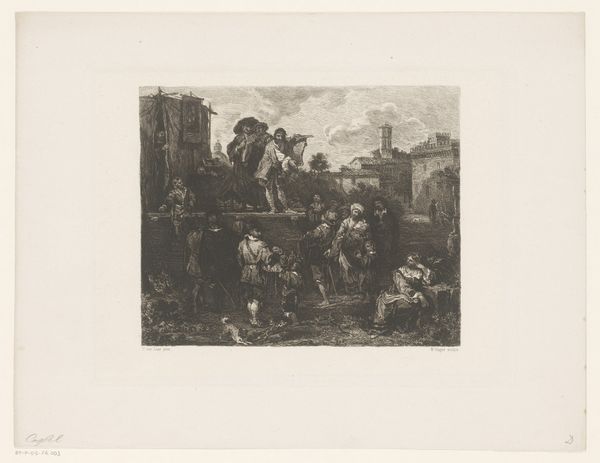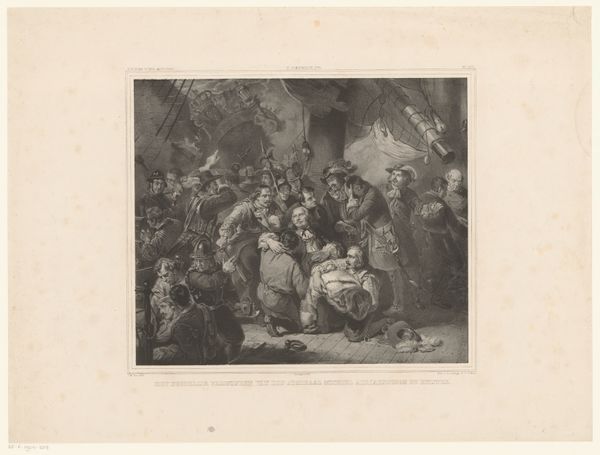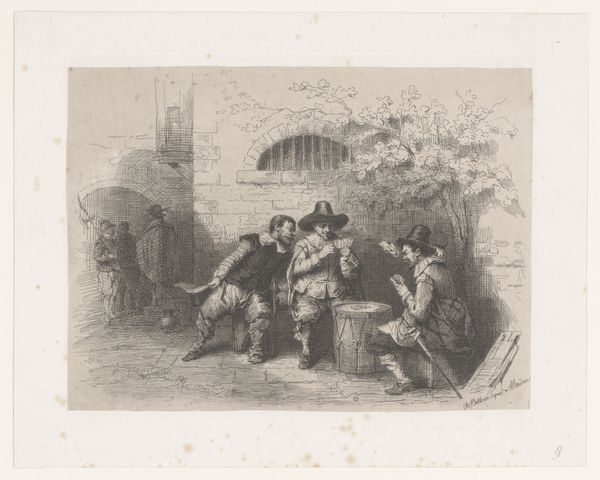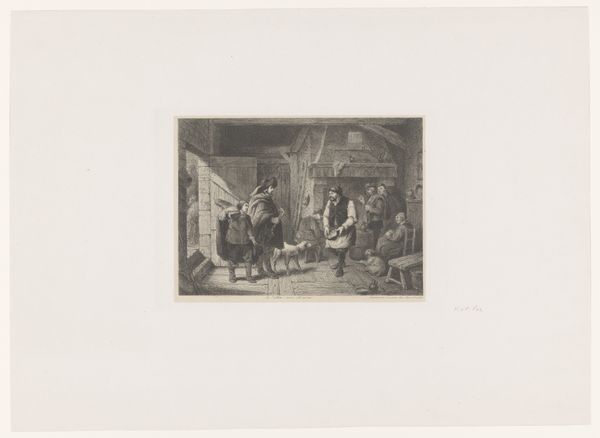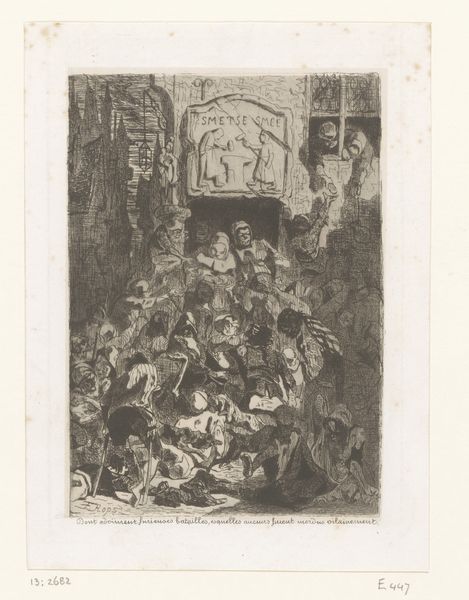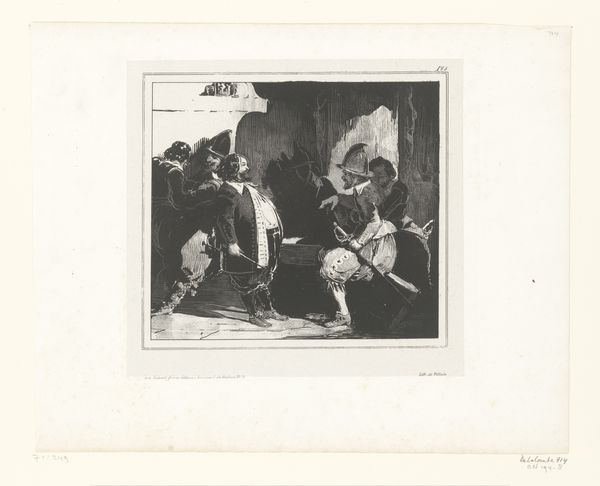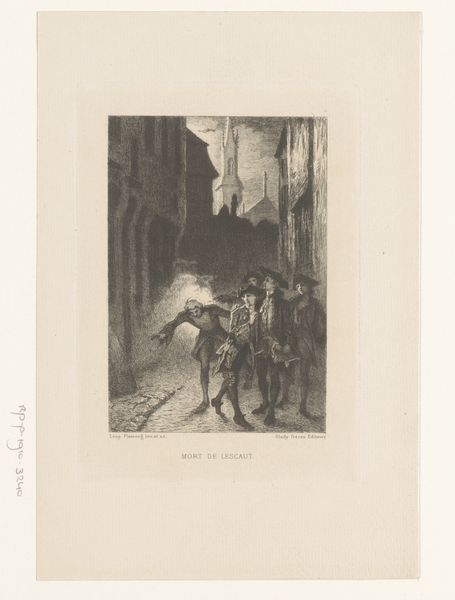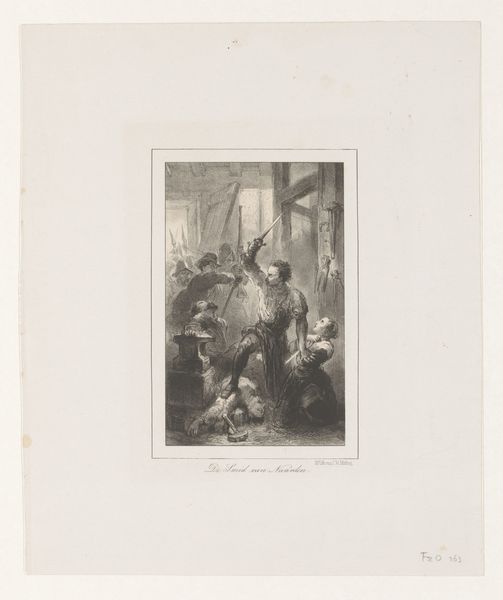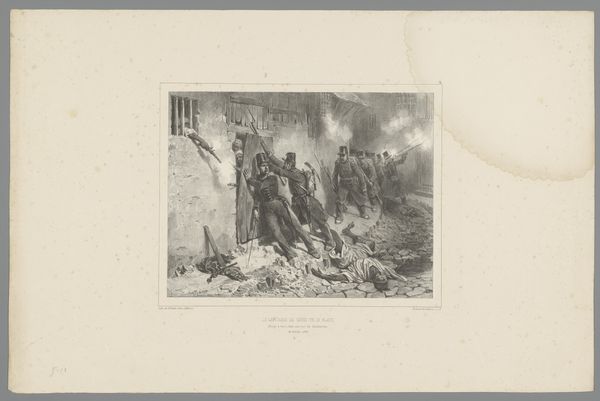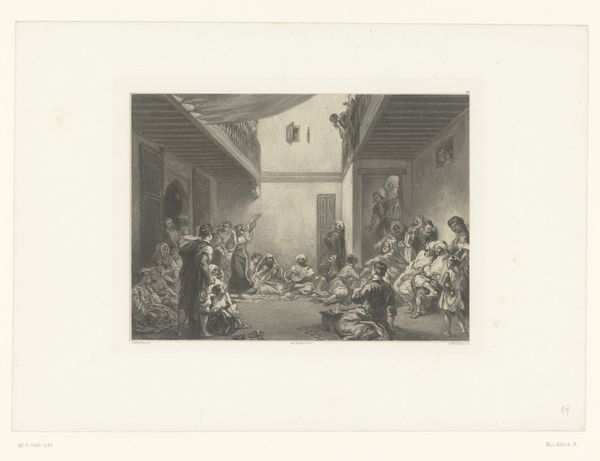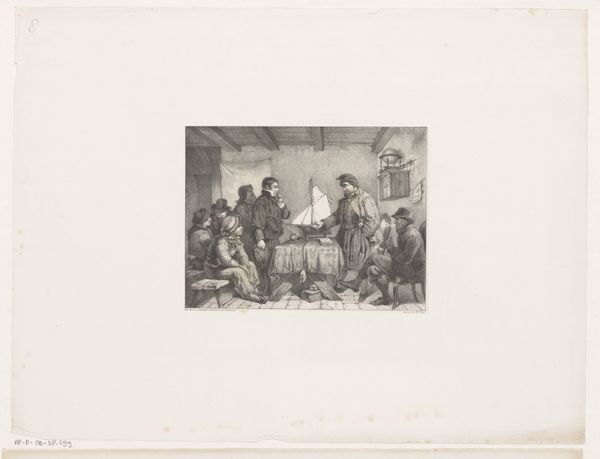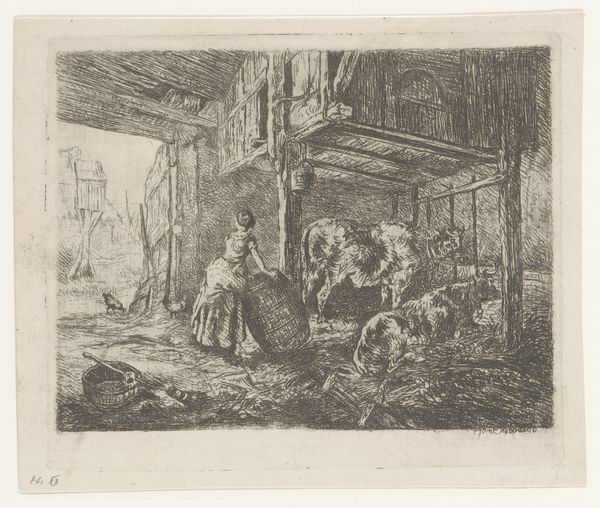
Bergen in Henegouwen per list ingenomen door Lodewijk van Nassau, 1572 1871 - 1873
0:00
0:00
williamunger
Rijksmuseum
print, etching, engraving
# print
#
etching
#
genre-painting
#
history-painting
#
engraving
#
realism
Dimensions: height 187 mm, width 272 mm
Copyright: Rijks Museum: Open Domain
Curator: What we’re looking at now is an engraving by William Unger, executed between 1871 and 1873. It's titled "Bergen in Henegouwen per list ingenomen door Lodewijk van Nassau, 1572," currently housed here at the Rijksmuseum. Editor: It’s certainly dramatic. The darkness is palpable; the stark contrast between light and shadow really drives the tension of the moment. It feels secretive, almost furtive. Curator: It depicts a specific historical event: the capture of Mons in Hainaut by Louis of Nassau during the Dutch Revolt. Unger, of course, was working much later, during a period of intense national self-reflection in the Netherlands. Images like these helped solidify a national identity. Editor: Absolutely. Look at the way the light pools around the figures in the center – our eye is drawn to their gestures. The way one man points ahead suggests impending action, and the positioning makes it hard to understand what to make of those sprawled in the foreground. It lends to a very unstable reading of the event depicted. Curator: These details served to communicate ideals of resistance and the struggle for independence, of the national narrative being crafted in the 19th century. Prints like this circulated widely. They influenced public opinion. Unger's role in visually reinforcing that is significant. Editor: It’s quite skillful in terms of technique. Notice the line work - how Unger uses the hatching and cross-hatching to build volume and create this shadowy atmosphere. There's a sense of depth created by this darkness. It pushes our focus where he wants it. Curator: It speaks volumes about the time it was made. The Dutch were very preoccupied with their past and their identity in the face of other dominating European powers at that moment in history, even centuries later. Editor: So, from the dramatic use of chiaroscuro to the expressive body language of the figures, the aesthetic is integral to understanding the historical moment the print strives to recreate, even hundreds of years apart. Curator: Precisely, a perfect snapshot of how art reflects and shapes our understanding of our collective story.
Comments
No comments
Be the first to comment and join the conversation on the ultimate creative platform.
